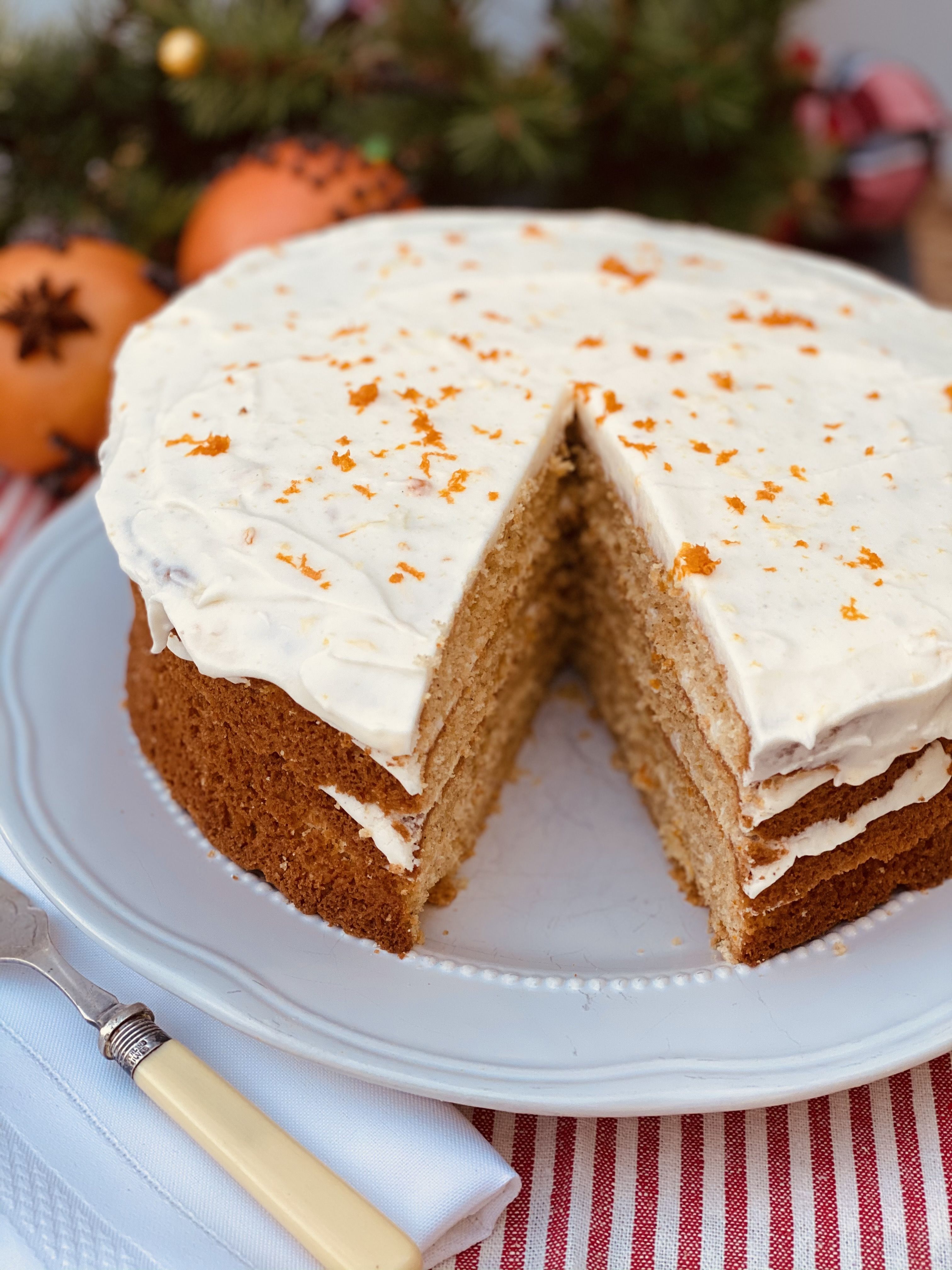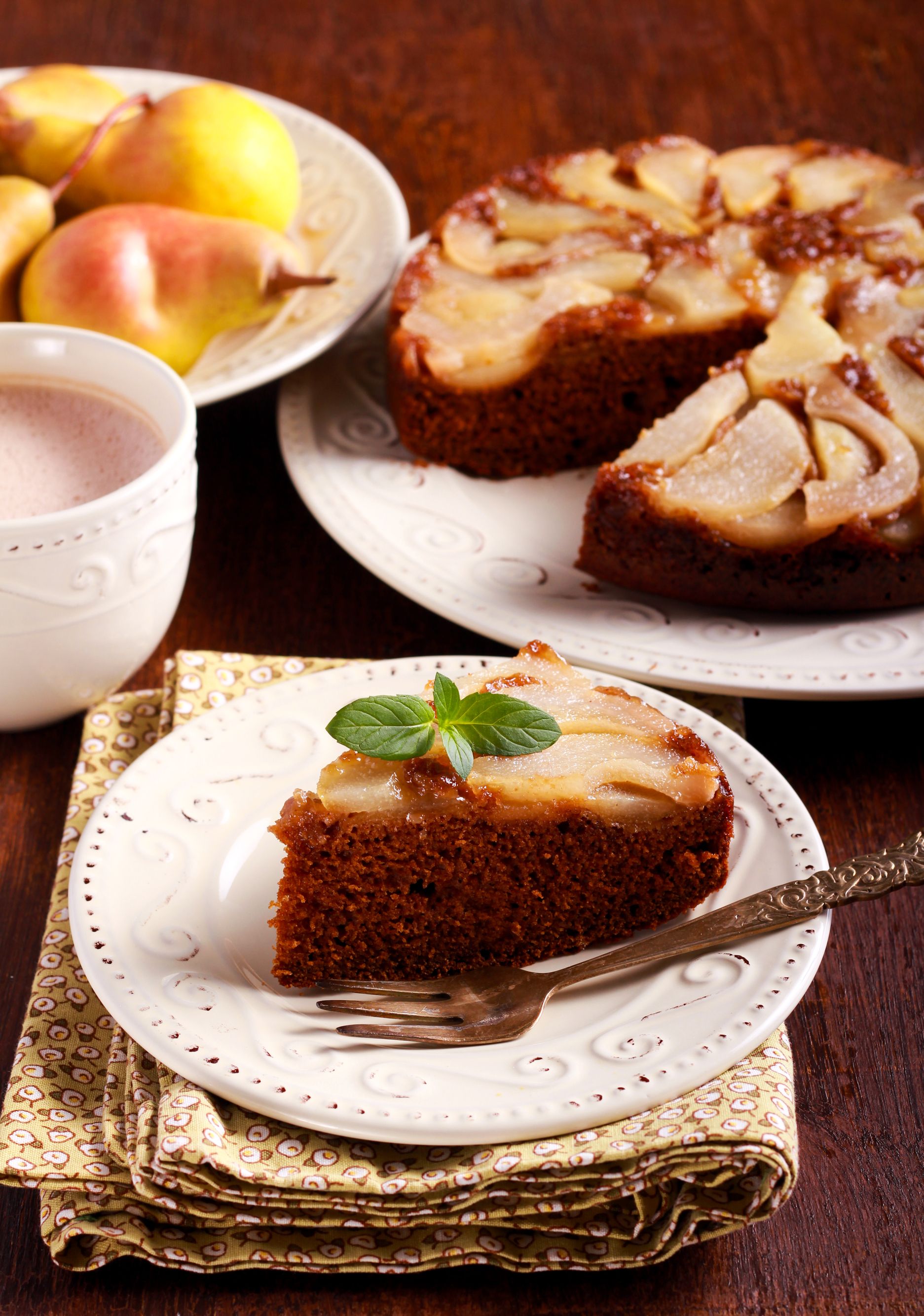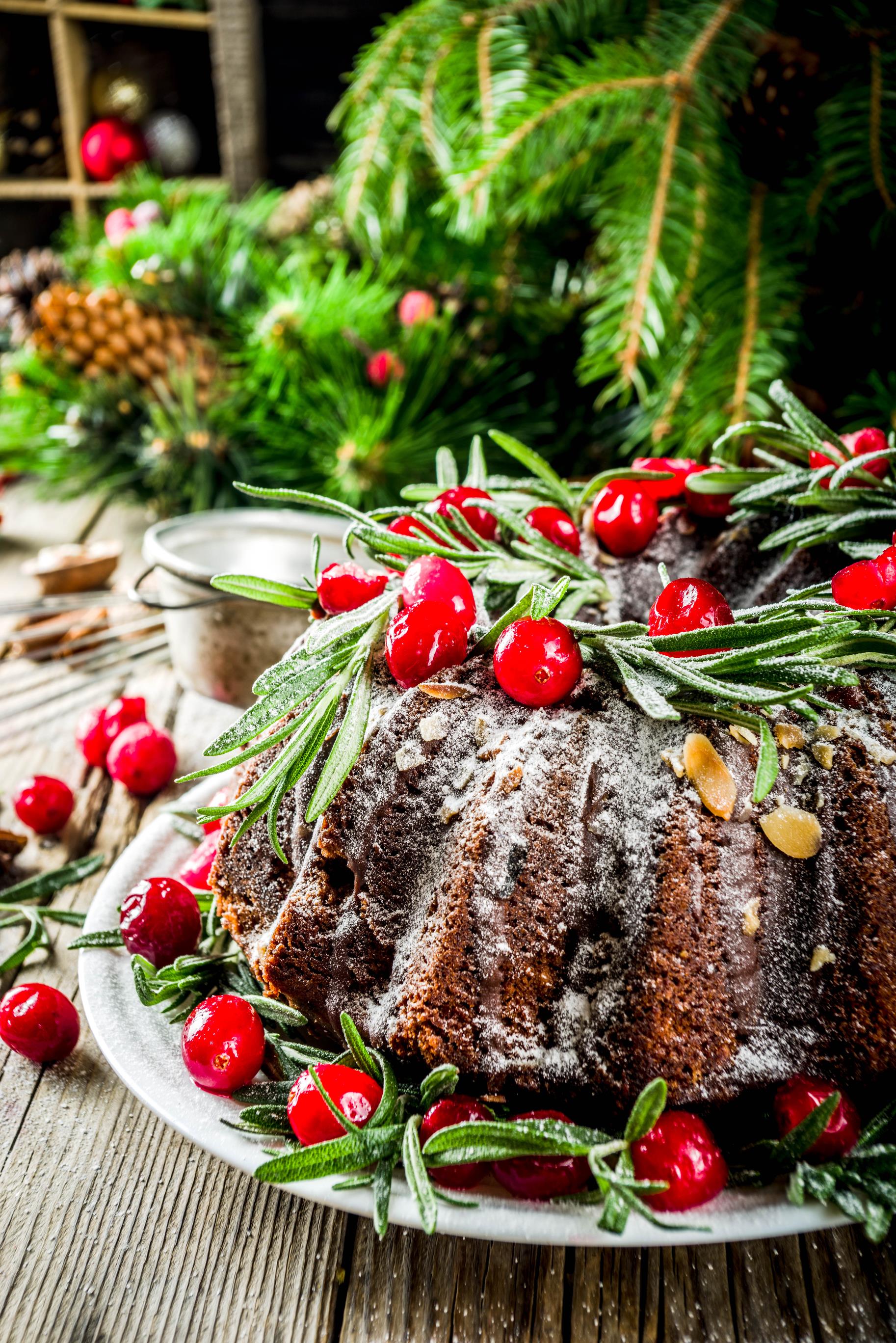Ten days and counting to Christmas! After two rather miserable years of smaller gatherings and quieter celebrations, we can all only hope that Christmas 2021 will be the merriest of all — fingers crossed! I assume the Christmas cakes have been baked by now, but there’s still loads of time to make a gingerbread cake, a pear and ginger pudding, or a lovely orange spice cake if you’re in the mood for a sweet change. You’ll find these recipes and more “elegant endings” in my newest cookbook Festive Flavors of Ireland. To order a signed copy, visit www.irishcook.com.
GINGERBREAD CAKE
Serves 10 to 12
Gingerbread men, gingerbread houses, even the smell of ginger signals Christmas is upon us. Made from sugars and spices brought back from the Middle East by soldiers returning from the Crusades, gingerbread first appeared in central Europe in the Middle Ages. Monks baked gingerbread for religious celebrations, and the first gingerbread man is said to have originated in the court of Queen Elizabeth I who gave important visitors portraits made of ginger-flavored dough. During the nineteenth century, this sweet and spicy cake, generally made with treacle (molasses), became primarily associated with Christmas. This beautiful cake can be served “as is” with a dollop of whipped cream or cut into cubes and used as the base of an old-fashioned trifle. For a festive touch, garnish the cake with sugared cranberries and rosemary recipe follows).
6 ounces unsalted butter, at room temperature
1 1/2 cups (packed) dark brown sugar
2 large eggs
1/2 cup molasses
2 1/2 cups flour
2 1/2 teaspoons ground ginger
1 teaspoon ground nutmeg
1/2 teaspoon ground cloves
1 1/2 teaspoons cinnamon
1/2 teaspoon allspice
1 teaspoon baking powder
1/2 teaspoon salt
1/4 teaspoon baking soda
1 cup water
Confectioners’ sugar, for dusting
Sugared cranberries and rosemary, for garnish (optional)
1. Preheat oven to 350°F. Coat a 10-inch Bundt pan with baking spray with flour.
2. In the bowl of a stand mixer fitted with a paddle attachment (or with a hand mixer), beat butter and sugar on medium speed until light and fluffy. Add eggs, one at a time, beating well after each addition; beat in molasses
3. In a large bowl, whisk together flour, ginger, nutmeg, cloves, cinnamon, allspice, baking powder, salt and baking soda. Add flour mixture to butter mixture in three additions, alternating with water; mix until combined. Transfer to prepared pan.
4. Bake for 55 to 60 minutes, or until a skewer inserted into center comes out clean. Let cool on a wire rack for 10 minutes; loosen cake from pan and invert onto rack. Let cool completely.
SUGARED CRANBERRIES AND ROSEMARY: In a small saucepan over medium heat, combine 1 cup water and 1/2 cup sugar. Cook for 4 to 5 minutes, or until sugar dissolves; remove from heat. Add 1/2 cup cranberries; stir to coat in syrup. With a slotted spoon, transfer cranberries to a wire rack set over a baking sheet or paper towels to drain excess syrup. Let dry for 30 to 40 minutes. Roll in additional sugar; return to rack to dry completely. Repeat with rosemary sprigs. Store in a single layer in an airtight tin; refrigerate for up to 1 week.

ORANGE SPICE CAKE
Serves 8
This cake is a lovely alternative to the traditional fruit-filled Christmas cake yet it maintains all the festive flavors of holiday fruits and spices. The recipe comes from Helen and Brian Heaton, the brilliant hosts at Castlewood House in Dingle, County Kerry. They suggest you use a thin-skinned seedless orange for the cake rather than any thick-skinned varieties such as Jaffa or Navel as their skin can be bitter.
CAKE
1 small thin-skinned orange
2 1/2 cups self-rising flour
3 teaspoons baking powder
1 teaspoon ground cinnamon
1 teaspoon Mixed Spice or pumpkin pie spice
1 1/4 cups sugar
8 ounces butter, at room temperature
4 large eggs
FILLING
4 ounces butter, at room temperature
4 cups confectioners’ sugar
2 tablespoons reserved orange pulp
Orange peel or zest, for garnish
1. Preheat oven to 350°F. Coat two 8-inch baking pans with baking spray with flour; line with a round of parchment paper.
2. Put orange into a small saucepan; cover with water. Bring to a boil; reduce heat and simmer for about 20 minutes, or until orange is tender when pierced with tip of a sharp knife. Remove from heat, drain; let cool for about 30 minutes. Cut in half.
3. In a small bowl, sift together flour, baking powder, cinnamon and Mixed Spice or pumpkin pie spice.
4. Transfer orange halves, including skin, to a food processor; pulse 8 to 10 times, or until chunky. Reserve 2 tablespoons of orange pulp for icing. Return bowl to processor; add flour mixture, sugar, butter and eggs; process for 20 to 30 seconds, or until mixture is blended (avoid overmixing). Divide mixture evenly between prepared pans.
5. Bake for 25 to 30 minutes, or until a skewer inserted into center comes out clean. Remove from oven; let cool for 5 minutes on wire rack. Invert pans onto rack, peel off wax paper. Let cool completely. Cut each cake in half horizontally to create four layers (see NOTE).
6. Make filling. In bowl of a stand mixer fitted with a paddle attachment (or with a hand mixer), beat butter until smooth. Slowly beat in sugar and reserved orange pulp. With an offset spatula, spread filling between layers and over top of cake. Garnish with orange peel.
NOTE: To cut each layer in half evenly, place toothpicks at the halfway point around the edges of cake. With a large serrated knife, slice through cake along toothpick line, slicing slowly to maintain accuracy.

PEAR AND GINGER PUDDING
SERVES 6 to 8
This pudding is a riff on steamed Christmas pudding and gingerbread. It starts with gooey pears on the bottom and finishes when the cake is turned upside down to reveal them as a deliciously gooey top! In between is a rich, dark, and spicy ginger cake that simply begs to be topped with whipped or clotted cream!
4 ounces unsalted butter, divided
1/2 cup (packed) light brown sugar
1 (15-ounce) can sliced pears in fruit juice, drained
1/2 cup sultanas (golden raisins)
1 cup all-purpose flour
1/2 teaspoon. baking soda
1 teaspoon ground cinnamon
1/2 teaspoon. ground ginger
Pinch of ground cloves
Pinch of ground nutmeg
1 large egg, beaten
1/4 cup (packed) dark brown sugar
1/3 cup golden syrup, such as Lyle’s, or light corn syrup
2/3 cup milk
Confectioners’ sugar, for dusting
Whipped or clotted cream, for serving
1. Preheat oven to 350°F. Line an 8-inch round baking pan with parchment paper.
2. In a small saucepan over medium heat, melt 2 ounces butter with brown sugar. Stir for 1 to 2 minutes, or until the butter is melted and the mixture is smooth; pour into prepared pan. Arrange the pears, overlapping slightly, over mixture; sprinkle with sultanas. Melt remaining 2 ounces butter; set aside.
3. In a medium bowl, whisk together flour, baking soda, cinnamon, ginger, closes and nutmeg. 4. 4. In a separate medium bowl, whisk together egg and melted butter; whisk in brown sugar, golden syrup and milk. Stir into flour mixture until blended; spoon over pears.
5. Bake for 35 to 40 minutes, or until a skewer inserted into the center comes out clean. Remove from the oven; let cool for 15 minutes in pan. Place a large plate or platter over cake; invert cake. 6. To serve, cut cake into slices; dust with confectioners’ sugar. Serve warm with cream.
Margaret Johnson is the author of twelve cookbooks, including the recently released Festive Flavors of Ireland. For further details on her work visit www.irishcook.com








